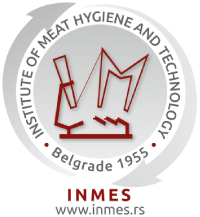Characterization of Bosnia and Herzegovina honey according to their physico-chemical properties during 2016-2017
Abstract
This study was conducted to evaluate the quality of 78 honey samples (Acacia, sage- Salvia officinalis L., linden, chestnut, honeydew and blossom) from Bosnia and Herzegovina. Reducing sugars, sucrose content, moisture, hydroxymethylfurfural (HMF), free acidity, water-insoluble content, diastase activity, electrical conductivity were analyzed. The samples of honey, collected during the 2016 -2017 season, were analyzed by using recommendation methods. Results show that in 2016 and 2017, a great number of honey samples were of insufficient quality to satisfy regulatory requirements. Among the overall determined parameters, hydroxymethylfurfural and diastase activities in same honey samples were not accepted by national and international regulation. A correlation between free acidity and electrical conductivity was found in acacia and blossom honey samples. The correlation between HMF content and diastase activity showed strong negative relationship. The quality of honey was varied based on botanical origins, handling and storage conditions.





